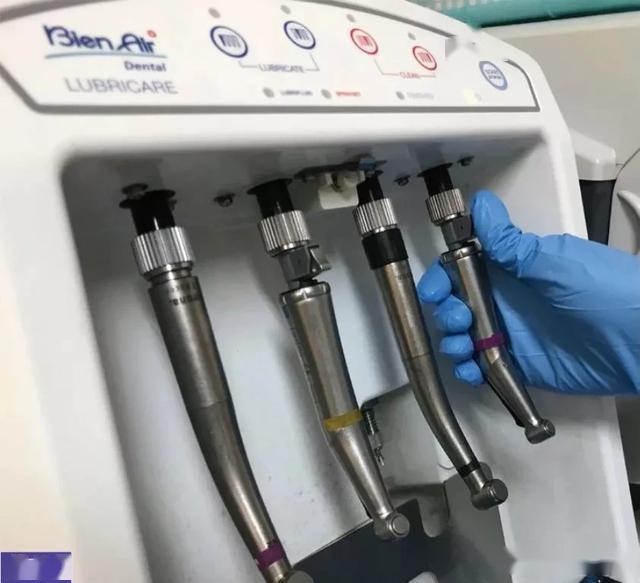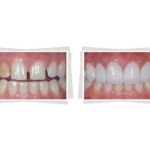- Your cart is empty
- Continue Shopping
Dental handpiece cleaning and maintenance methods

Dental handpiece in dentistry cleaning and maintenance necessary
In oral treatment, dental handpieces are the most frequently used devices, with a wide variety and complex structure. Due to a large number of pipelines and cavities in the dental handpiece, the patient’s blood, saliva, and various debris will splash and contaminate the dental handpiece during use. At the same time, the negative pressure generated when the operation is stopped will also cause blood, saliva and Debris sucked back into it. If the dental handpiece is not cleaned thoroughly, the dirt remaining in the inner cavity, gaps, etc. of the dental handpiece will become solid after high-temperature sterilization and adhere to the inner wall of the lumen, bearings, balls, etc., which will not only affect the dental handpiece The performance and lifespan of the product will also affect the sterilization effect and become an important medium for cross-infection. Therefore, the cleaning quality of the dental handpiece plays a very important role in ensuring medical safety, improving the performance of the handpiece, and reducing the cost. This small class will explain in detail the cleaning and maintenance steps of dental handpieces.
- step one
Remove the dental handpiece from the quick interface or cable, and remove the bur.

- step two
Put the dental handpiece into the mechanical cleaning equipment, fix the dental handpiece, and select the correct cleaning procedure. The mechanical cleaning equipment should be equipped with a dedicated interface for dental handpieces, and the cleaning water flow and airflow conform to the internal structure of the dental handpiece. Dental handpieces are not suitable for ultrasonic cleaning.

- step three
Take the cleaned dental handpiece out of the washing machine, and dry its interior with a pressure air gun.

- step four
Connect the dental handpiece to the matching oil injection adapter or connector and insert it into the automatic oil injection maintenance machine for oil injection. Choose a suitable oiling program.

- step five
Pack and encapsulate the oiled dental handpiece.

- step six
Perform pressure steam sterilization on dental handpieces.

Frequently Asked Questions
Q: Why do dental handpieces need to be thoroughly cleaned before sterilization?
Answer:
The dental handpiece enters the patient’s mouth directly and is in close contact with the saliva, blood, gingival crevicular fluid, and dental plaque in the mouth. When the dental handpiece stops rotating, the air in the head of the dental handpiece is under negative pressure. This negative pressure can cause the saliva, blood, microorganisms, cutting debris and other pollutants in the patient’s mouth to be sucked back into the dead corners and water and air ducts inside the dental handpiece. If it is not cleaned, the bloodstains, oil stains, and other dirt remaining in the internal cavities and crevices of the dental handpiece will easily form biofilms after high temperature and high-pressure sterilization, thereby preventing effective contact between microorganisms and gases and causing sterilization failure.
Q: Can the oil injection curing machine replace the cleaning machine?
Answer:
The important role of cleaning is to remove all visible dirt, tissues, bloodstains, and other organic matter to ensure the effect of sterilization. For dental handpieces that do not use a washing machine, the oil injection curing machine alone cannot effectively remove the dirt inside and outside the dental handpiece and the microorganisms (film) on the pipe wall, so that the oil film of the oil injection curing machine cannot contact the handpiece well, and the dirt will accumulate more and more. As a result, cross-infection is caused, and the damage rate of dental handpieces will also increase.
Q: Can dental handpieces that are not cleaned be directly sterilized by high temperature and high pressure? What is the result?
Answer:
Studies have shown that it is easier to form a biofilm in the inner cavity of the dental handpiece if it is not cleaned. The time required for complete sterilization of the bacterial spores wrapped by the biofilm in a pressure steam environment at 134°C is 150 minutes. Under the working time of the vacuum sterilizer (3-4 minutes), it will not be able to sterilize completely, which will cause sterilization failure, thereby increasing the chance of subsequent patients being infected.
List of popular dental handpieces:
LED light push button high-speed dental handpiece
https://www.dentallaboratorio.com/product/led-high-speed-dental-handpiece/
Slow speed dental handpiece set
https://www.dentallaboratorio.com/product/low-speed-dental-handpiece/
Air prophy handpiece
https://www.dentallaboratorio.com/product/dental-air-prophy-handpiece/
Ultrasonic cleaner machine for dental handpiece
https://www.dentallaboratorio.com/product/dental-ultrasonic-cleaner-machine/




